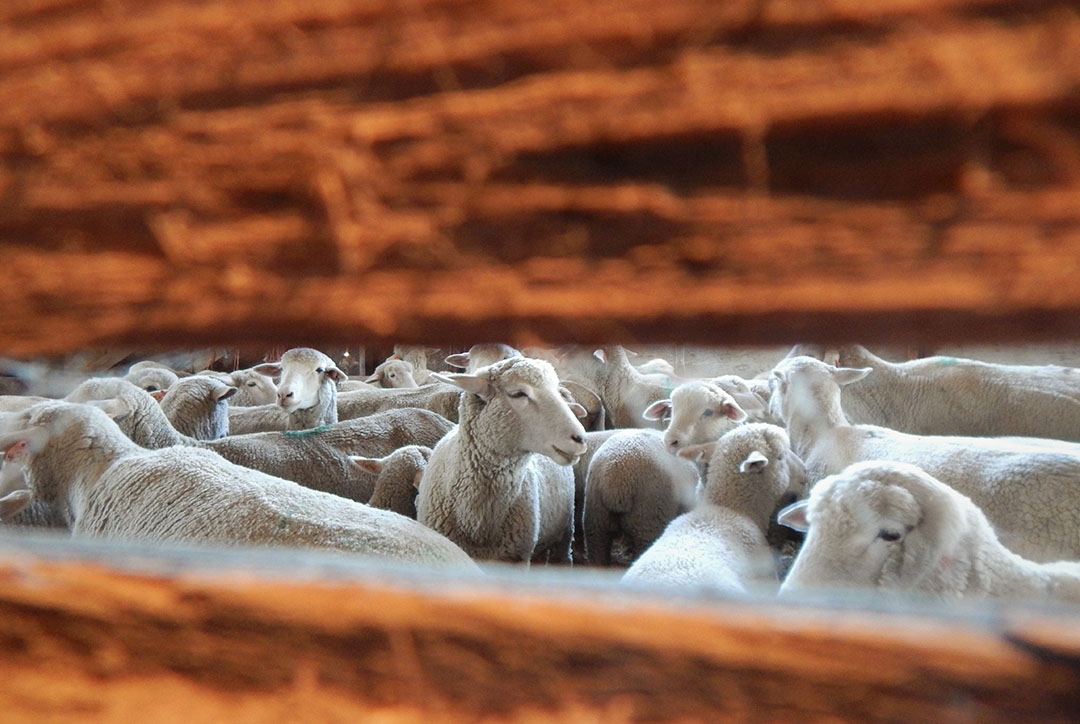
Sheep producers frustrated with resistant parasite population
Saskatchewan sheep producers are increasingly frustrated by signs that their deworming practices are no longer effective.
By Kendra ElliottThat resistance is the focus of a study at the Western College of Veterinary Medicine (WCVM) where Dr. Fabienne Uehlinger has been investigating this anthelmintic resistance with the help of three veterinary students — Kim Fillmore, Kendra Elliott and Mirjam Stigter — and Tyler Gibson, a student at the University of Saskatchewan's College of Agriculture and Bioresources.
In collaboration with researchers from the University of Calgary who have been studying Alberta flocks, the WCVM team has been working on the Saskatchewan portion of the study which objectively assesses the efficacy of current anthelmintic drugs in sheep flock using a fecal egg count reduction test (FECRT).
Sheep producer Brian Hunstad participated in the study and says he’s “just a little bit frustrated” with the results from his flock.
He and his family are relatively new to the sheep production industry and acquired most of their flock of 150 commercial North Country Cheviot-cross ewes within the past two years.
When three different oral deworming drugs were administered to three separate groups from his farm, fecal egg counts from all three groups after treatment indicated that the parasites were resistant to the treatments.
Ideally a dewormer will reduce the pre-treatment parasite fecal egg count by 95 per cent or more. A count of anything less than that is an indicator of a resistant worm population.
“I knew there was an issue ... but I thought we had stuff cleaned up,” says Hunstad. “We wormed everyone twice and culled hard, but it appears we have created another problem.”
Ultimately, the primary concern for producers is financial, but having a resistant population of parasites in his flock puts Hunstad in a tough spot. “Even if we wanted to start fresh, we can’t in good conscience sell the flock to someone else.”
Norman and Bonny Lee from Pangman, Sask., own a Columbian-influenced flock of more than 100 ewes, which provide them with meat as well as a wool crop.
They’re also concerned about the financial impacts of dewormer resistance. When the Lees used deworming drugs to treat three groups of animals from their flock, they had mixed results. One of the treatment groups indicated dewormer resistance, the second showed susceptibility, and the third group showed signs of potential resistance.
The animals in the third group were treated with closantel, a dewormer that targets only one parasite species — the barber pole worm (Haemonchus contortus), a particularly nasty parasite that can cause anemia and death.
Although the results from that group indicated an inadequate reduction of egg count after deworming, these findings may simply indicate the presence of worms other than the barberpole worm in the parasite population. DNA analysis of the parasite population found in the Lees' flock before and after treatment will shed further light on the predominant population of parasites that was present.
While the Lees are waiting for the DNA results, Hunstad is consulting with Uehlinger to find possible options for reducing the parasite burden in his animals. For example, he has always implemented rotational grazing with his flock during the summer months, and that’s one integrated management practice that contributes to lower worm burden.
Although Hunstad’s sheep looked healthy and the lambs were growing well during the study, he worries about “losing the whole crop ... if this worm issue starts to work its way into the lambs.” The Hunstads got into the sheep industry because “they have the best return on a dollar,” but that all falls apart without a crop of lambs to sell.
Uehlinger and her research team are optimistic that their study will encourage producers to use fecal egg counts to help them decide whether they should deworm and to make them aware of any deworming resistant parasites infecting their flocks. The research can also provide insight into the best management practices for the future.
There’s also the possibility that their research findings will necessitate emergency drug releases — a measure that allows veterinarians to bring in new treatments from other countries that can be used for the flocks severely affected by resistance.
Like every farmer who encounters a challenge, Hunstad is realistically optimistic.
“We have to deal with it and keep going,” he says.
Kim Fillmore (WCVM ’18) co-ordinated the Western Canadian Sheep Parasite Study — Saskatchewan in 2016 (click here to read article). With the support of the WCVM Research Office, the project was able to grow with two co-ordinators — Kendra Elliott and Mirjam Stigter — for the 2017 summer.
Kendra Elliott of Cromer, Man., is a third-year veterinary student who was part of the WCVM’s Undergraduate Summer Research and Leadership program in 2017. Kendra’s story is part of a series of articles written by WCVM summer research students.
